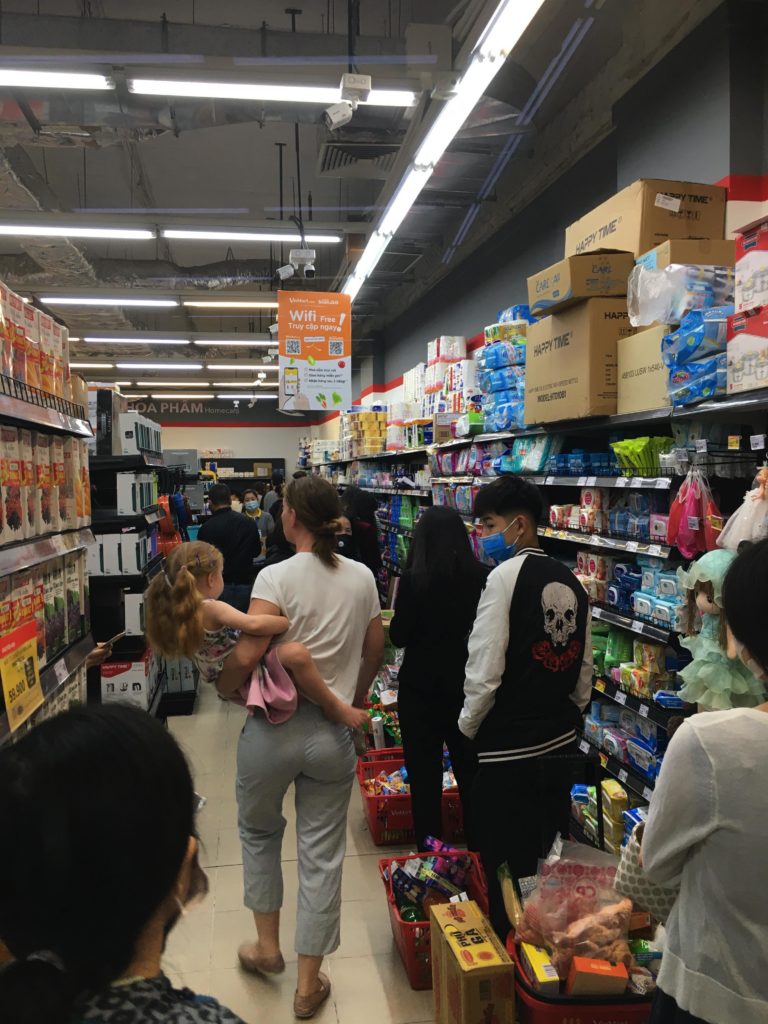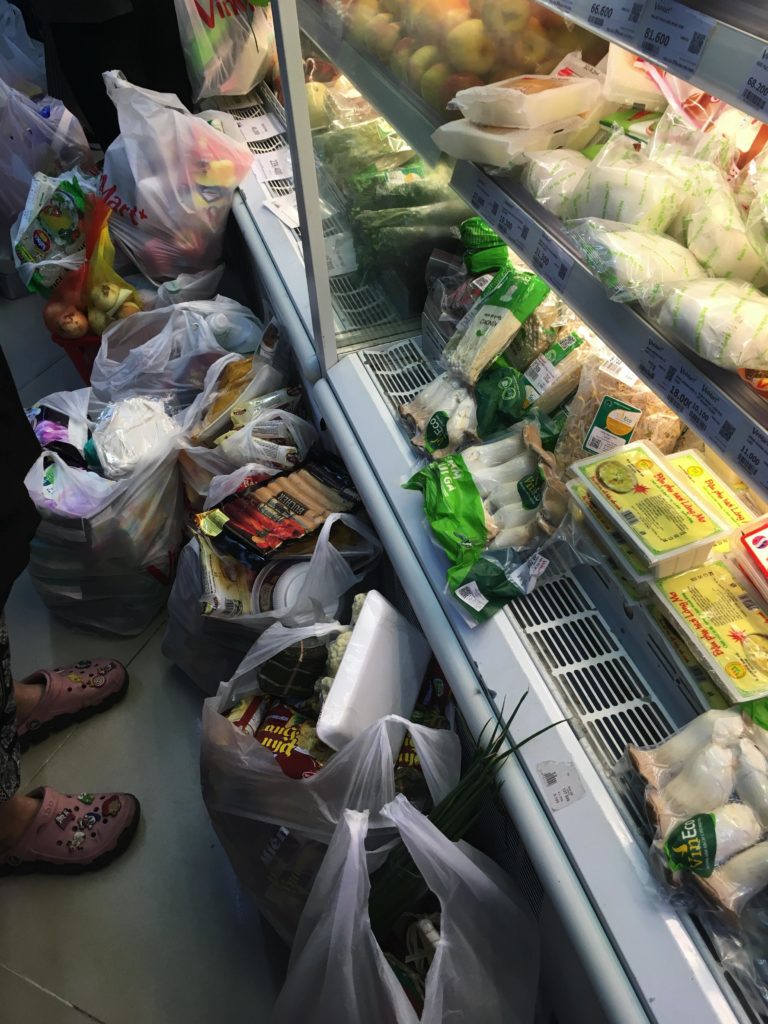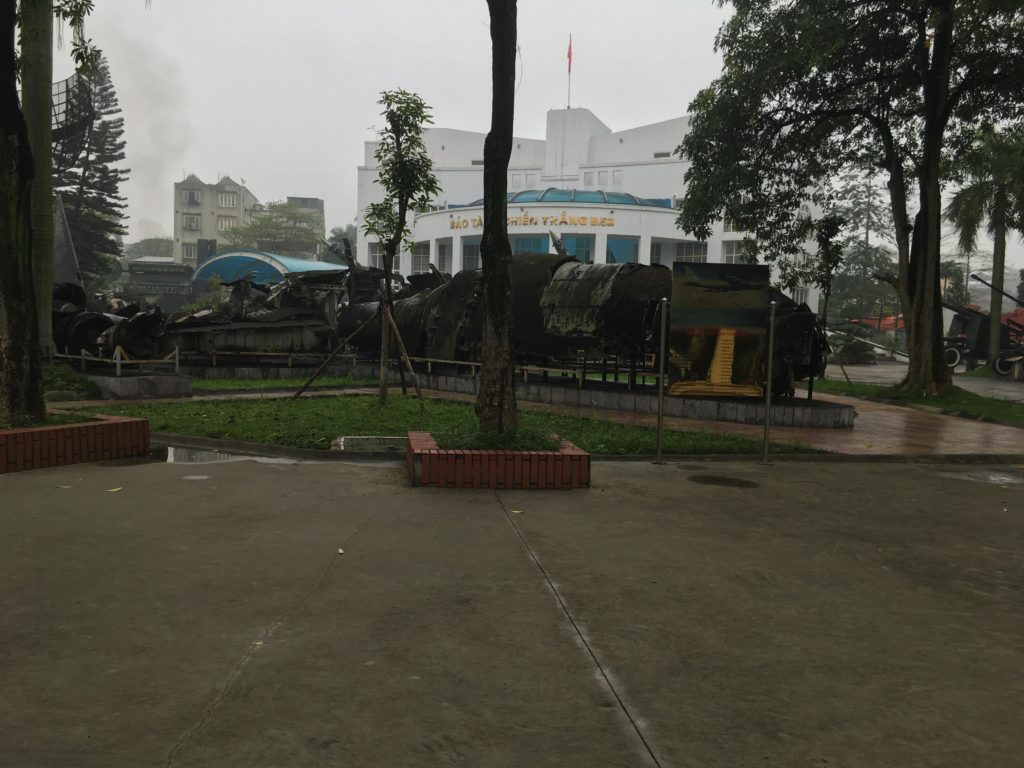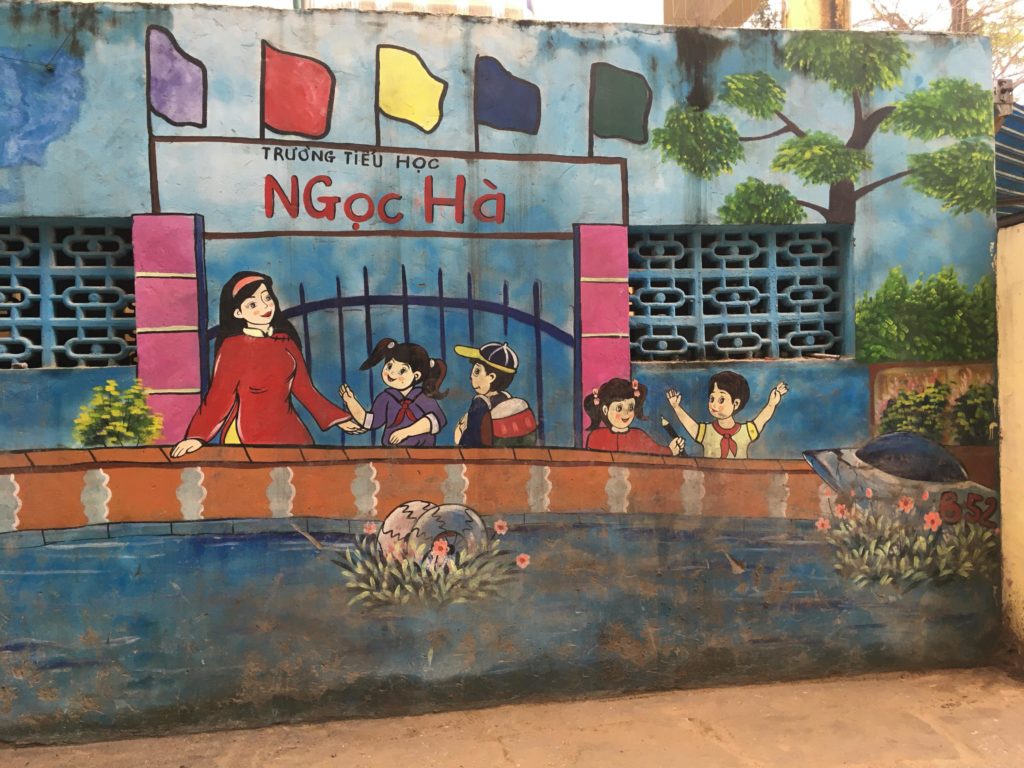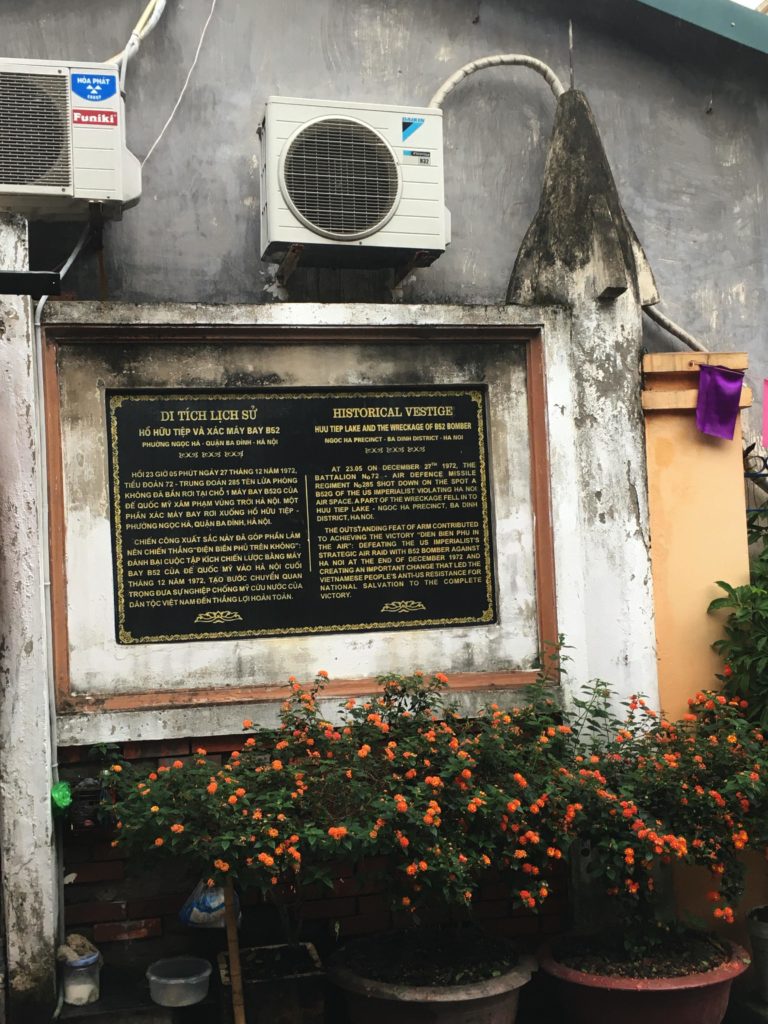I had high hopes when I flew into Hanoi in early March that it would be a good place to hunker down for a bit while the world got the whole coronavirus thing under control. For the most part, my predictions about Vietnam being a safe place to ride out the storm have proven true so far. My ideas about how long that would take may have been wildly off-base, however, as I watch borders close and flights cancel and cities lock down around the world.
So I don’t mean for this to be a travel blog, but I know friends and family on the other side of the world are probably a little curious about how things are going here and I thought I’d fill everyone in at once.
First, I got sick. Not COVID sick, but some shorter, less intense bug that nonetheless managed to worry me quite a bit for a couple of days. I still can’t figure out how I managed to catch anything; I wear a mask outside religiously (initially, because of the terrible air quality; then, because the government made it mandatory), sanitize and wash hands frequently, and avoid touching my face while outside. And, other than going to the grocery store, or going for walks around town (usually combining the two; big grocery stores like you find in the U.S. or Thailand are rare here and none are very close to me, so shopping involves going to half a dozen neighborhood places to see which one is carrying what I want on that particular day) I don’t really go out that frequently anyway. I have no idea how any bug got through that, but it did!
I think I worried my AirBnB host quite a bit when I told him to not send the housekeeper in because I was feeling sick, but he and his father, Mr. Quang (who looks after the place primarily) checked in on me several times a day until I started getting better, which was very nice of them. I even got some authentic Vietnamese medical advice: orange juice and lemonade are apparently the flu supplements of choice here.
Life During Virus
Anyway, I am getting over that, but life here is far from normal. When I landed, there were no active cases of COVID in the country. Three days later, they started arriving from overseas; the first, about a half mile from where I am staying. Out came the roadblocks, soldiers in hazmat suits sluicing down the sidewalks with hundreds of gallons of disinfectant.
There was a little panic buying that first day, but, for better or worse, I had no idea what was going on… it was my first Saturday at any store in Hanoi, and I thought maybe double-lines wrapped around the inside was just a typical shopping day here. I happened to get in line behind a British expat who lives here, however, who clued me in to what was going on.
Things calmed down quickly, however, and there were no shortages of anything that I could tell.
Now, you aren’t allowed in stores without a mask on, and a guard takes your temperature and spritzes your hands with alcohol-based sanitizer before you go in. The country has now effectively stopped all incoming foreigners and strictly limited even Vietnamese nationals returning from overseas. Everyone who arrives goes directly into mandatory two-week quarantine with regular testing. They are also now retroactively testing all arrivals since March 8, tracking people down at hotels and homes to get a swab. Hanoi’s mayor has asked people to self-isolate for the next two weeks, calling it the critical period.
Almost all infections announced over the past couple of weeks have been found among people already in mandatory quarantine–either placed there on arrival from overseas (a two-week quarantine having become required in mid-March, shortly before all foreign arrivals were stopped… Vietnamese citizens are still allowed to return but are also immediately quarantined) or after contact with a previous infectee.
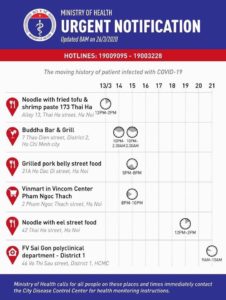
For those few infections found in the wild, the government performs intensive contact tracing. And in many cases, that information is published for everyone to see, so you get a play-by-play trace of the person’s steps and activities–addresses visited, dates and times–so you can know if you have possibly been exposed and should be tested. Testing and quarantine are paid for by the government, even for foreign citizens, so people are encouraged to come forward. And they have been tracking down every passenger on any flight with an infectee and testing widely.
The quarantine orders have teeth, too: a woman in Hanoi who had been asked to self-quarantine after contact with a patient tried to skip out two days before her two weeks were up to fly out to England. The police hauled her off the plane, stuck her into a government run quarantine facility to start the two week clock over again from scratch, and fined her for leaving the house.
They no longer close down the neighborhood and send the military in when they find a new case, though. The approach has become more surgical in recent days as they’ve narrowed down the infection vectors and traced contacts more closely… only people with direct contact are usually quarantined, while others are just tested.
It’s an approach that many countries are way past being able to implement, but it’s a credit to Vietnam that they instituted border and flight controls early on in order to keep infections at a level where they can be managed without shutting down the entire country. I have every hope and some moderate expectation that within the two week quiet period initiated this week, things may start to return to normal internally.
Over the past couple of days it has gotten noticeably quieter. Many of the little coffee shops that were open are closed, and the clusters of people sitting along the sidewalks and lakeside drinking and talking disappeared with them. What little motorcycle traffic there is seems to be dominated by delivery drivers.
Here and there some small shops are open, but few people are in them, even the little grocery stores, which remain fully stocked. When I went to one today, there were three bored stockboys trailing me around to instantly relieve me of any item I chose to run it up to the cashier… everything was all rung up by the time I arrived. And this is a store with a footprint of about a third the size of your average gas station convenience store in the States.
All of it validates my view of Vietnam as one of the places that is taking the virus seriously and taking the right steps to restrict the spread early.
Ghost-town Hanoi
But it does make the experience significantly different than what you read about in the guidebooks.
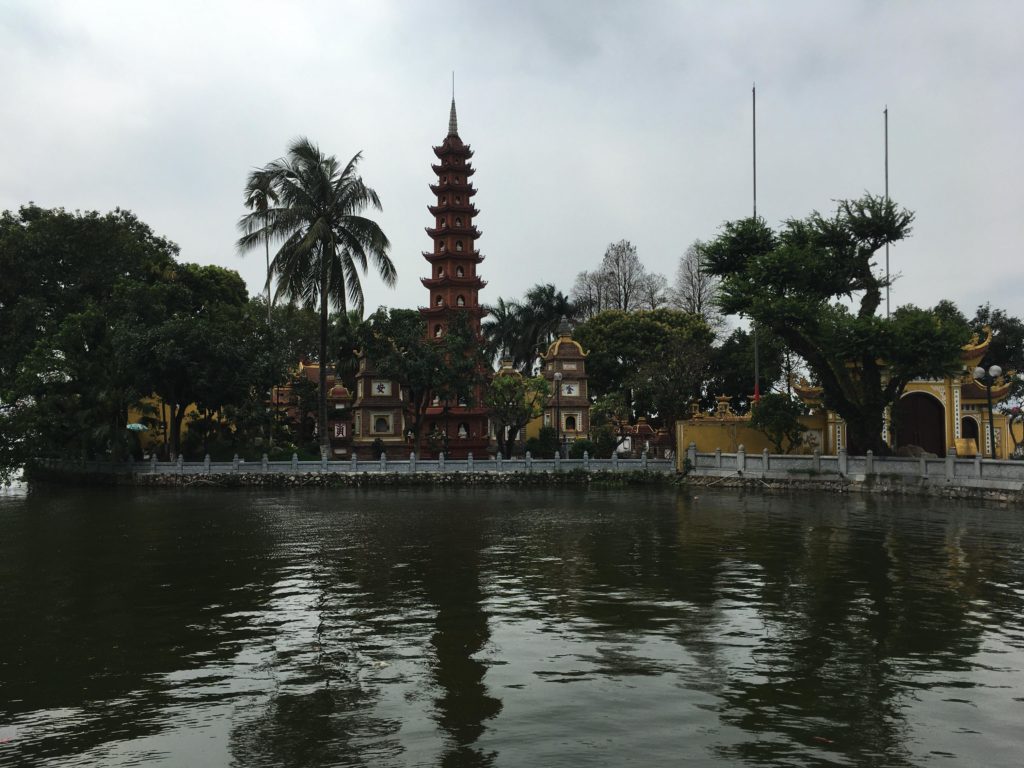
Before the shut-down order, I got to take some long walks around town. It is less risky now than in normal times because there’s a lot less traffic. There aren’t really sidewalks, per se, so you’re always walking in a flow of cars and (predominantly) scooters. It takes a lot of focus; Vietnamese are just as addicted to their mobile phones as any other global citizen, and it’s typical for them to be cruising along completely focused on the phone, even in crowded conditions.
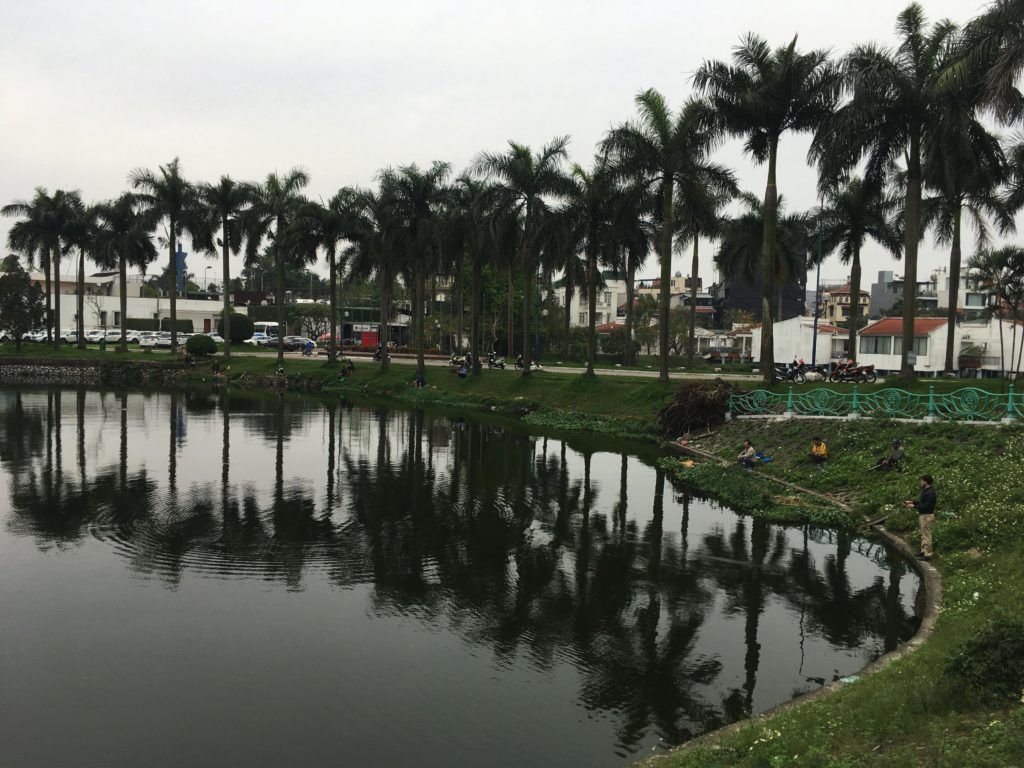
The honking here isn’t as bad as I experienced in Da Nang, at least, but it’s still fairly constant on the main roads. Fortunately, my AirBnB is well off the beaten track, on an island in the West Lake, in the middle of a thick block of housing with narrow and unpredictable alleyways intersecting it. It’s not always easy to tell what’s an alley and when you are walking up someone’s front entry. I only have gotten lost a couple times, though. My walk in from the main street:
That’s my gate and a fast pan up to my balcony there at the end. It’s less busy these days than when I took the video.
The West Lake is picturesque and in any other capital city in the world, this little island of calm would be filled with sprawling multi-million dollar mansions.
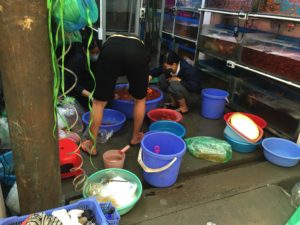
Here, for whatever reason, it appears to primarily be the aquarium district. All along my little alleyway are shops selling fish food, fish, glass tanks, filters, and the other necessaries for fish-focused hobbyists. There are no other types of shops. It’s a baffling concentration, and equally baffling how anyone possibly could know where to go to find these places… there are no signs, and it’s often unclear whether you are just walking past a house where people happen to keep a lot of fish, or a fish store where people happen to live in the back. One place I go past has all the tanks and stuff but it looks like someone’s dining room; a big round table inside that is constantly filled with people eating and chatting.
Many neighborhoods around town are like that, particularly near where I am, in the old quarter. Although you risk getting a motorcycle in the back along the way, it’s fascinating to walk along and get little glimpses of daily Hanoian life going on… a woman in a shop talking on the phone while vigorously hula-hooping, two old guys drinking coffee and smoking cigarettes, kids playing soccer in a tiny courtyard. It’s a bit like Bangkok in the way that you feel like every little branch off every little alleyway leads to its own hidden and complex world, though it’s on a much smaller and more intimate scale than Bangkok.
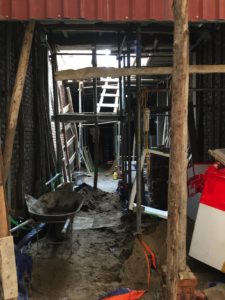
One interesting challenge that I had not previously considered was that of construction in such tightly packed neighborhoods. I guess I had assumed that everything was built up from the inside out and then stayed as it was laid until the entire place was razed sometime in the next hundred years (as an aside, I still don’t have any real conception of how private property ownership works here, in a supposedly communist state… how do you get one of these little plots in the first place?) but that’s not the case… there are several active construction projects going in this neighborhood, far from the main streets.
There’s obviously no access for conventional construction equipment, and the potential alternative of erecting an external scaffolding is ruled out by the tightly-packed buildings (another aside: why so narrow and deep? I guess I should look into why shotgun houses came about in the United States, maybe it’s something similar here). But they build them tall–I’m staying in a place that is five stories, and there are buildings the loom over it.
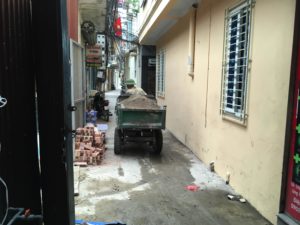
The answer is that it’s all done by hand, apparently, with materials off-loaded out on the main streets and then shuttled in by wheelbarrow or motorcycle. I happened across a little motorcycle dump truck plying its trade one day. They pretty much block the entire alley when they are operating, but no one seems to mind.
There are other ghosts here, too.
On one of my random walks, I happened upon a picturesque little pond in the middle of a clutch of buildings. A chunk of unidentifiable machinery jutted up out of the corner of it; but I knew what it was from various signs I had passed along the way: the B-52 Deli, B-52 Coffee Shop, a mural showing a teacher and some happy children dancing around the wreckage of a B-52 bomber. I’d stumbled upon B-52 Lake.
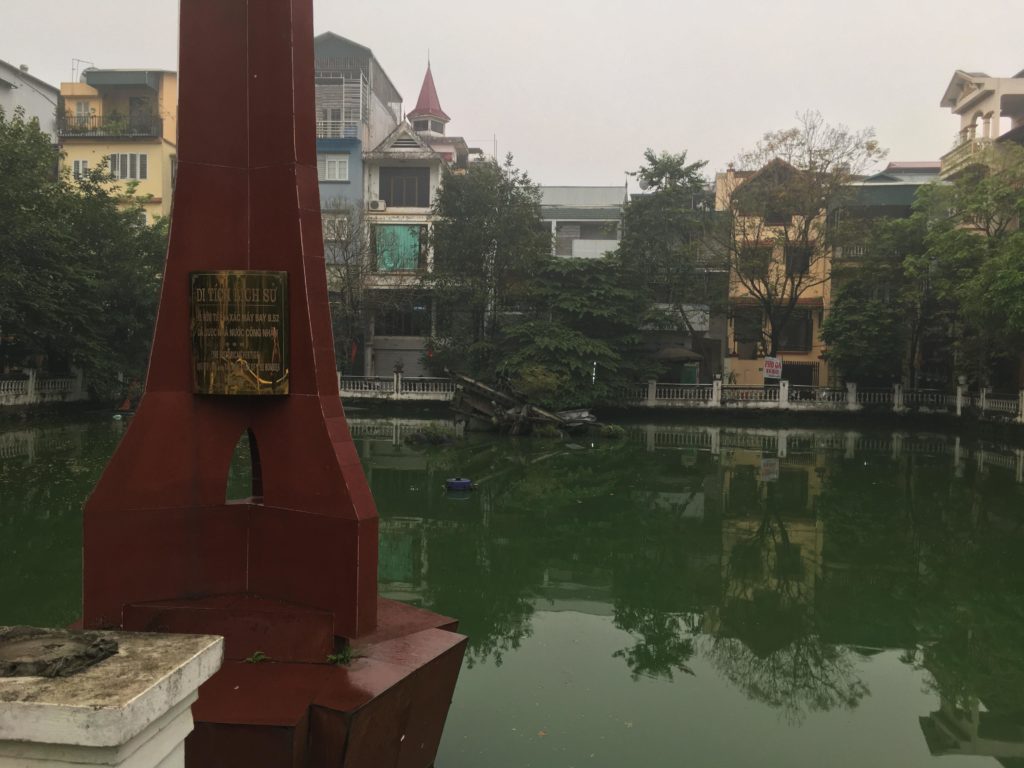
Just about 24 hours before I was born, on December 27, 1972, during the final phase of Operation Linebacker II, Nixon’s last hurrah at bombing the North Vietnamese into submission, a SAM crew outside what was just a small village on the outskirts of a much smaller Hanoi let off three SA-2 Guideline missiles into what must have seemed like a torrent of bombers coming at the capital.
One of them struck at the starboard wing root of a B-52 with the callsign of Cobalt-01. One crewman was killed in the explosion; another bailed out but apparently did not make it to the ground alive… his body was discovered and returned in 1985. The other four crew ejected successfully and were promptly captured.
Their time in custody was blessedly short compared to many pilots captured in the war; they were released during prisoner exchanges negotiated during the Paris Peace Accords already underway, and back in the United States by March of 1973.
It was the final loss in the Linebacker II campaign and one of the last B-52s lost in the war. But it has been a lasting point of pride for the Vietnamese, as evidenced in all the business names, murals, etc. The larger chunk of the aircraft was eventually pulled out of the lake and serves as the centerpiece of the B-52 Victory Museum a few blocks away (closed, naturally, when I walked by).
An older fellow who happened to be walking by when I was looking at the lake made sure to draw my attention to the plaque about what they call the “Historical Vestige” here now.
Apart from that (and a plaque along my typical path around the West Lake, with John McCain’s name leaping out at me from the spray of unfamiliar Vietnamese words, memorializing where he parachuted in from his destroyed fighter jet) the American War (as it’s known here) appears to be far from the minds of today’s Vietnam.
Still, in general the people here aren’t as friendly at Thais–this is definitely not The Land of Smiles. But that’s not to say they are unfriendly… just brusque; businesslike. I’ve had a couple people stop me just to speak a little English, and I haven’t seen any of the hostility that has been reported by some people as foreigners have increasingly become associated with COVID (although I’ve seen a few stores with signs posted in English “No foreigners”… but there are idiots and bigots in every country, ours is only the most famous for it).
On the plus side, I haven’t been pestered by the many hucksters and street vendors that I’ve noticed in more touristy precincts such as Hoi An.
There are some delightful parks and many lakes scattered around, and if the air pollution drops at some point I may spend more time outside. It’s just starting to get a little warm, or at least uncomfortably warm, with the high humidity, but sitting rather than walking should be fine.
I haven’t found much in the way of the excellent French legacy of baked goods that the travel guides talk about. There are many bakeries, but most of them are not even up to par with what I find in Thailand, let alone Western standards. I have found at least one good indoor coffee place, not too far from here, and on the lake, but it looks like it will be a couple weeks before I go back, even if they don’t shut their doors.
Isolation on The Other Side of The World
If I’d been picking a spot in Vietnam to be marooned, however, I’m not sure Hanoi would be it. If I had to pick a place where everything was going to be closed, it would be a spot with a beach (can’t close the ocean!) and much better air quality.
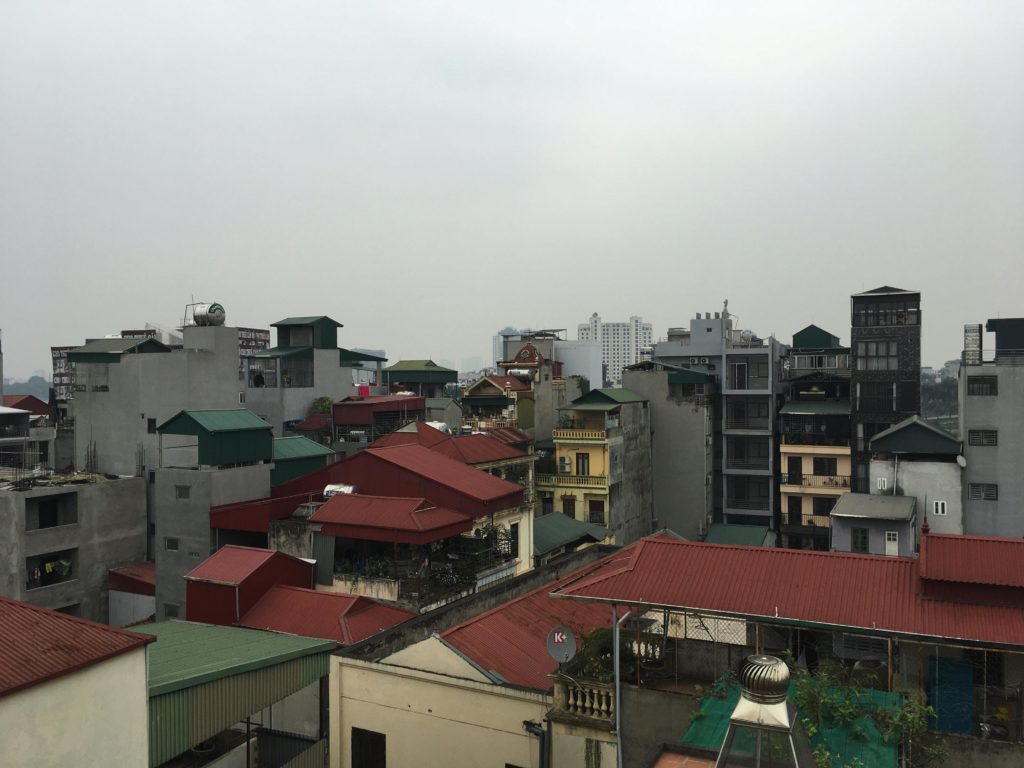
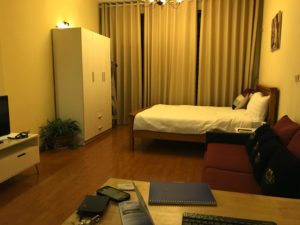
My apartment is fine, nothing special, but again, a tiny studio in a nondescript neighborhood with a view consisting of a neighboring balcony about five feet away. I can hike up to a nice little patio on top of the building, with a washer and dryer and much better view, but air quality and work (I need wifi!) typically keep me down below.
Fortunately, work has completely blown up, so that’s mostly what I do most days now.
There is cable TV, with a respectable selection of English-language channels, mostly movies. That’s on a lot. When I’m really looking for entertainment, though, I flip through the Vietnamese channels.
The military remains a big deal here; revered from their success in the American War and recognized as a bulwark against encroaching Chinese interests, they have a more active role in society than what we are used to at home.
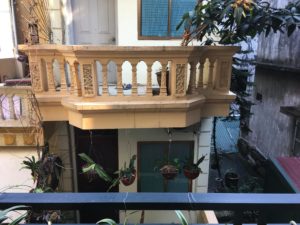
This has some interesting side effects. One of the more predictable ones is that many news shows are apparently delivered by the military, the anchors, the weatherman, etc all in uniform and presenting the news of the day.
One of the more amusing results is the other types of shows that are also put on by the military: a version of “The Voice” where the audience, judges, and competitors are all in uniform, quiz shows with the host in camouflage and young draftees answering questions.
Although the language sounds very much like Thai to me, it’s not really similar, and I can’t make out any of the words. But I try to keep up my Thai studies a bit, too, so I don’t get completely out of practice.
Assisting me in that effort is Monica’s nephew, Chokdee (his nickname; it means “Lucky”), with whom I play games online most evenings. He’s a little older than Tessa, and far better than I am at the games we play. I listen to him and his friends chattering and catch a word here and there. His English is good enough that he and I can communicate okay. Additionally, when I die before he does (usually!) he yells, “You kill my Scott! Now I kill you!” and hunts down my assailants.
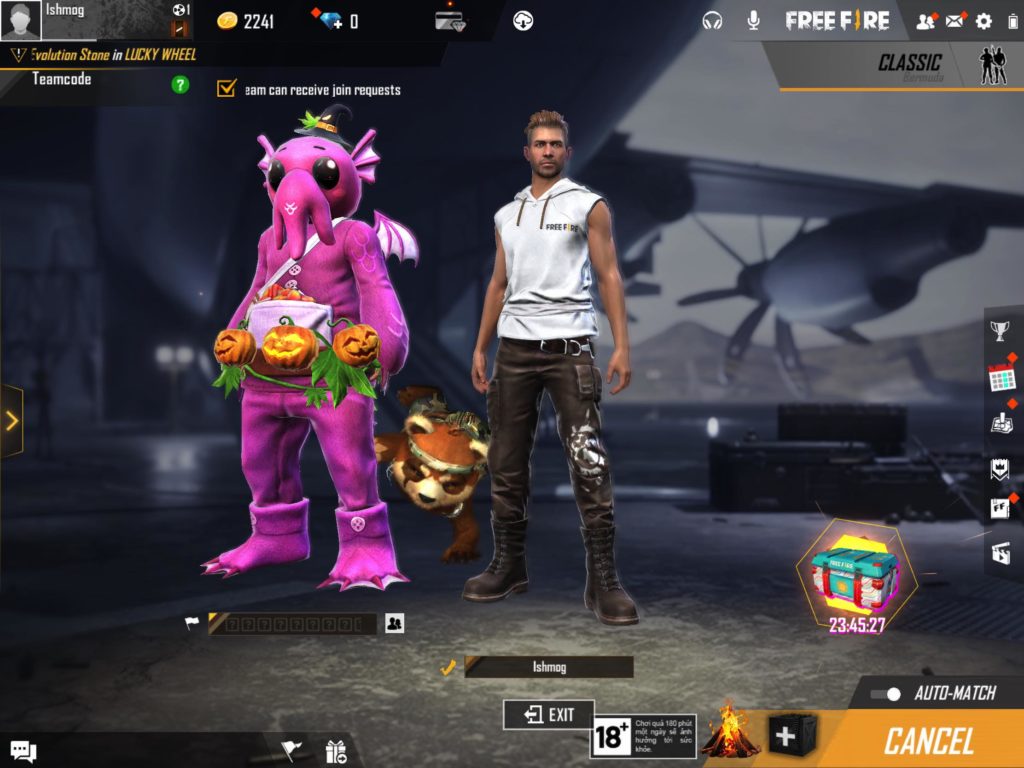
I read ebooks, I watch movies, I work, I read probably too much news. It’s a little repetitive, and I’d rather be in Thailand (although Monica is now mostly working from home, too… logistics in her little place could be challenging!) than here right now, but I guess I’ll survive.
What Does The Future Hold?
It seems likely at this point that I’ll have to extend my stay in Hanoi. I was due to head out on April 8, but another week or so beyond that might offer better perspective on the course of the outbreak here. Currently, internal travel is not expressly limited, but you do have to go through health screening and many flights have been canceled. I’m also a little nervous about getting on a packed bus or train just yet, screening or no.
But it does leave me a little marooned; my flight back to Thailand in early April has been canceled already. Even if I could find another one, Thailand has effectively closed off entry to foreigners as its own numbers explode. And even if I got past that to get to Bangkok by mid-May, when my return flight to Seattle is scheduled, that flight passes through Taiwan, which now blocks all foreign nationals, even in transit.
So I will be in Vietnam for the foreseeable future, and perhaps some unforeseeable period even after that.
I’m hoping that, at least internally, Vietnam is able to recover quickly and open up a little more, so I can treat this as more of an unusual, enforced sightseeing experience rather than an interlude in a foreign jail. I could bounce around to see a little more of the country while I’m here if that happens.
But, like the rest of the world, for now I’m just waiting, trying to neither be infected nor to become an infection vector.
My travel insurance is among the few that will cover COVID-19 infections, if I do get something, but it’s unclear how their repatriation components can work when there are simply no available flights. They won’t cover the canceled flights if you are not infected, apparently; in one of those weird insurance policy quirks, my best way to get made whole would be to go out and get sick!
It’s only money, though, and I’m not that worried about it.
Time is something I can’t really recover, but all I can work with is what I have on my hands right now, so I’ll try to make the best of it wherever I am at, for however long that may be.


